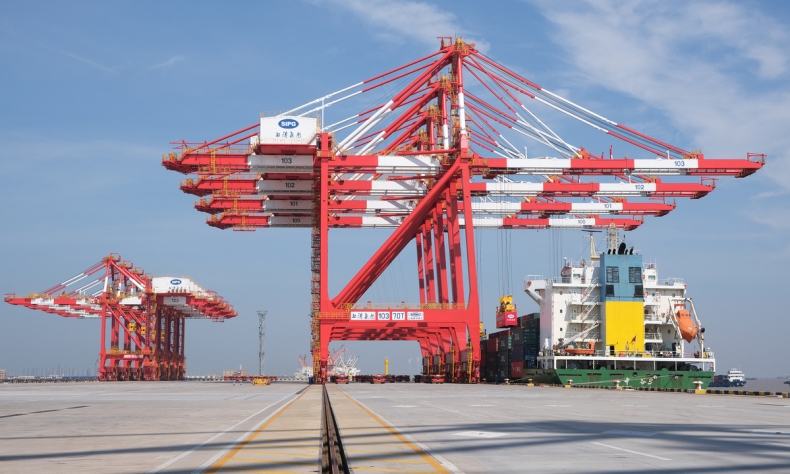On Track for Growth Target

As the stock market warms up, the property market picks up and consumption burgeons, shored up by incremental policies, China is on track to achieve its 2024 growth target.
Flagging global recovery momentum, rising trade protectionism, and flaring geopolitical tensions have not dampened China’s economic growth. The country’s GDP grew 4.8 percent year-on-year in the first three quarters of 2024, rising to RMB 94.97 trillion, data from the National Bureau of Statistics showed.
However, there have been misgivings about China’s growth prospects, caused by recent fluctuations in the stock market and the side effects of structural adjustments, coupled with the Western rhetoric about China’s economy peaking. But experts say the problems are temporary.
“China has adequate leeway for financial and monetary policies,” Lin Yifu, dean of the Institute of New Structural Economics at Peking University, said at a recent economists’ forum. “If we can enact proper policies and implement them, we can stabilize confidence and the economy will be back to the normal growth track.” Lin also highlighted the importance of developing new productive capacities to maintain medium-to-high-speed growth.
That is already being done. In September, a package of incremental policies was issued. Zheng Shanjie, head of the National Development and Reform Commission, said they are designed to strengthen counter-cyclical macro policy adjustment, expand effective domestic demand, and increase efforts to help enterprises. They will also stabilize the real estate market and boost the capital market. Besides, they are expected to improve the quality of economic development and support the healthy development of the real economy and business entities.
The week-long National Day holiday in October demonstrated China’s strong consumption momentum, fueled by booming tourism. With 765 million domestic trips made, a yearly increase of 5.9 percent, domestic tourist spending during the holiday climbed 6.3 percent to RMB 700.8 billion, according to the Ministry of Culture and Tourism.
The postal and express delivery industry also saw a surge during the holiday. A total of 3.16 billion parcels were collected, with the average daily collection increasing by 28.4 percent year-on-year. Over 3.12 billion parcels were delivered, the daily volume expanding by 26.7 percent year on year. In the 2024 Fortune Global 500 list China Post topped postal operators worldwide in both revenue and profit. In the first eight months of this year, the postal service provider raked in revenue of RMB 472.17 billion and profits of RMB 70.48 billion.

Meanwhile, to stabilize the property market, China is expanding its “white list” mechanism to ensure that all eligible property projects have access to financial support. The white list was devised this year for local authorities to recommend eligible real estate projects to financial institutions to disburse loans for reasonable financing needs. The Ministry of Housing and Urban-Rural Development and the National Financial Regulatory Administration have underlined the need to ensure the delivery of homes, asking the local authorities to adopt measures to stabilize the real estate market and halt the decline in prices.
The National Day holiday was also a “golden week” for housing developers and agencies, galvanized by a string of stimulus measures nationwide to reduce financial burdens on home buyers and relax or even scrap rules constraining property transactions. More than 5,000 pre-owned homes were sold in Beijing, soaring by over 150 percent, according to real estate agency Centaline Property. In Shanghai, sales of pre-owned homes during October 1-6 multiplied from the same period last year to surpass 1,500 units, Xinhua reported.
More than 130 cities held events to promote commercial housing sales and publicize policies during the holiday. Many cities, including first-tier ones like Beijing, Shanghai and Hangzhou, lifted restrictions on buying properties and reduced the minimum down payment ratio.
On the finance front, a broader-than-expected policy package was announced in September to stimulate economic recovery. It included reducing the reserve requirement ratio for banks and mortgage rates for existing homes. In October, the central bank announced setting up the Securities, Funds and Insurance companies Swap Facility (SFISF), initially for RMB 500 billion, for healthy and stable development of the capital market. As the first monetary policy tool to boost the capital market, it will enable eligible securities, funds and insurance companies to use their assets as collateral in exchange for highly liquid assets such as treasury bonds and central bank bills, China’s central bank said.
The new tool is expected to encourage the participation of non-bank institutions, improve the transmission efficiency of monetary policy in the capital market, and contribute to the balanced development of bond, stock and other markets.
Experts say the fundamentals of China’s economic development have not changed. Its huge market potential and strong economic resilience remain. As the stock market warms up, the property market picks up and consumption burgeons, shored up by incremental policies, China is on track to achieve its 2024 growth target.
 Facebook
Facebook
 Twitter
Twitter
 Linkedin
Linkedin
 Google +
Google +










